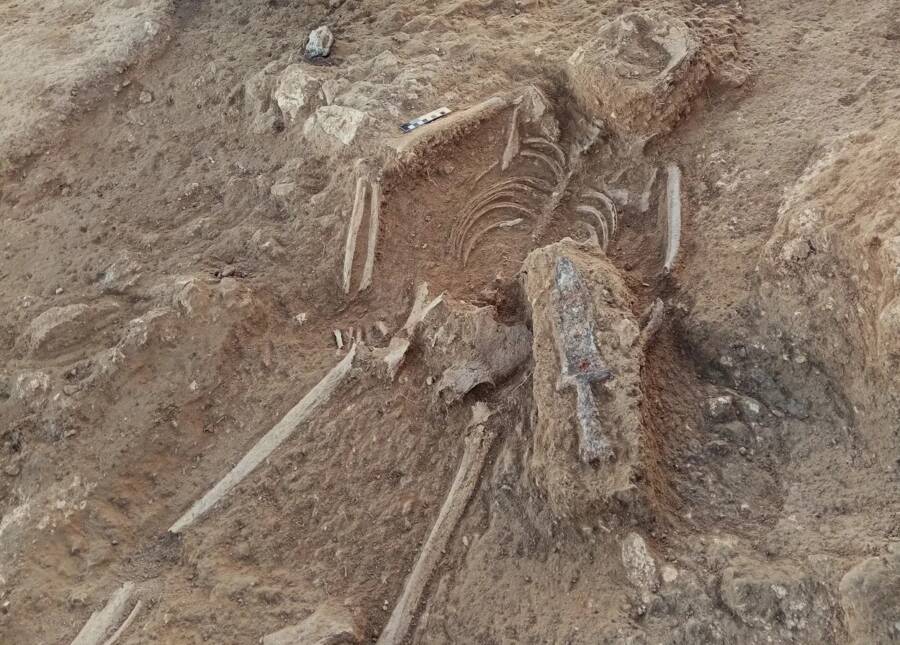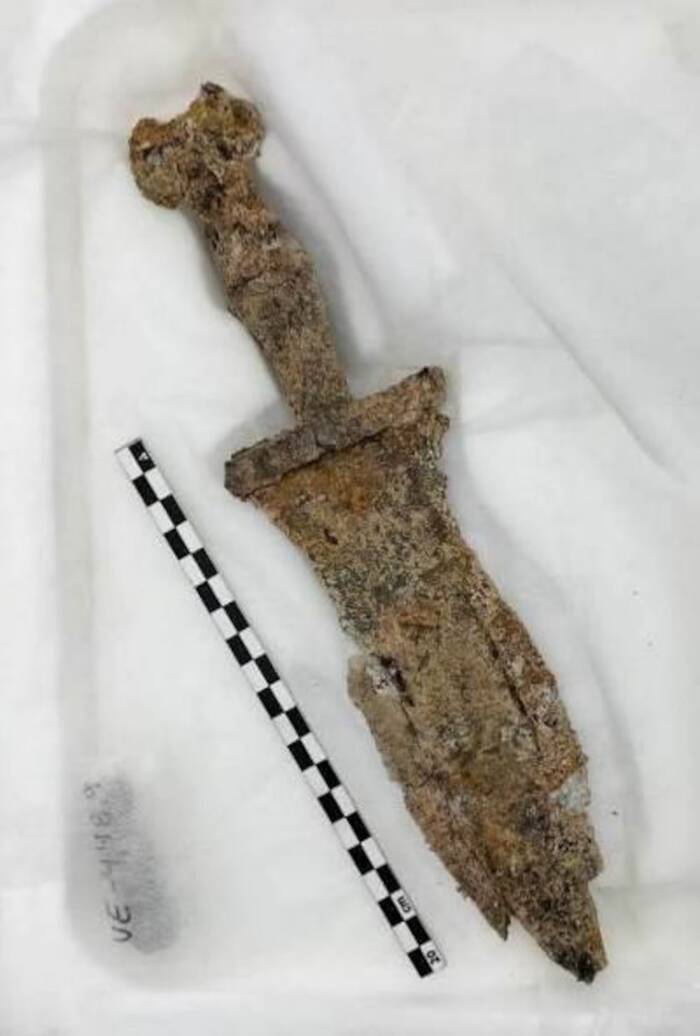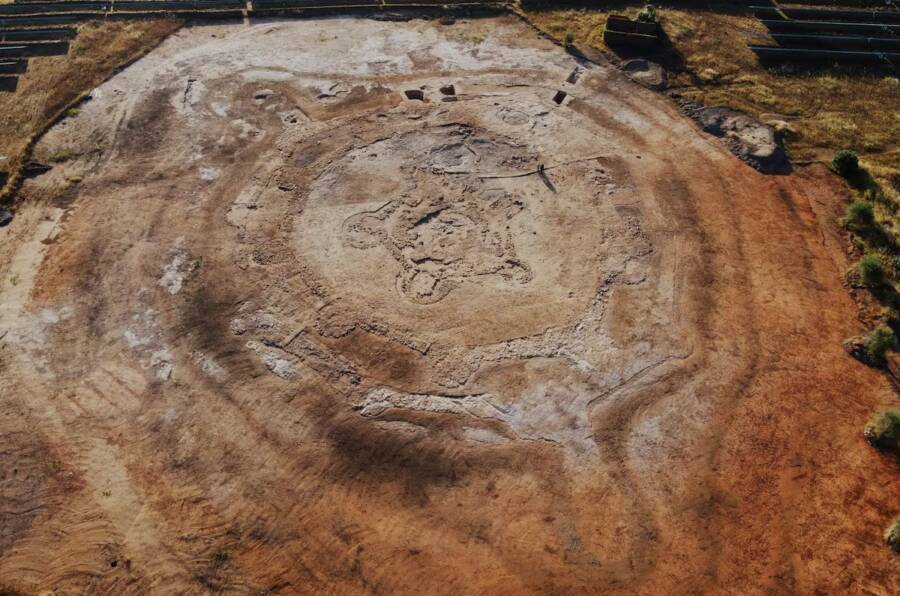The grave and the dagger date back to the second or third century C.E., and the method of the burial suggests that the man may have been a soldier who faced a dishonorable death.

Tera S.L.The presence of a pugio, a type of Roman dagger, suggests that the man was buried with dishonor.
During the construction of a new solar farm near Almendralejo, Spain, an archaeological survey revealed evidence of a sprawling ancient fortress. While excavating this site, archaeologists came across an even more stunning discovery: the remains of a Roman-era man, buried face down, with his feet cut off and a dagger placed upon his back.
Though many questions about the man remain, experts suspect that he committed some kind of crime — one that resulted in his dishonorable burial.
Discovering The Man With A Dagger On His Back
As reported by El País, archaeologists with Tera S.L. oversaw the excavation of the fortress once it was detected. Initially constructed in the third millennium B.C.E., the site was abandoned around 2450 B.C.E. There was no other evidence of human activity at the site until the burial, which dates to the second or third century C.E.
The grave of the man with the dagger was discovered as archaeologists excavated one of the fortress’s defensive ditches. Thought to be between the ages of 25 and 35 years old, he was buried in a shallow grave with a pugio (a dagger favored by the ancient Romans) placed on his back.
What’s more, the man was buried face down — and his feet had been cut off.

Tera S.L.The ancient Roman pugio was still completely intact and sheathed.
Though little is known about the man, archaeologists were able to make some guesses about why he’d been buried in such a strange way.
For one, they believe that the man in the shallow grave was a soldier, because the placement of the dagger on his back seems deliberate. This suggests that he may have been executed and given a dishonorable burial, possibly for crimes of desertion or theft.
Assuming the man was a soldier, then archaeologists have a pretty good idea of where he was stationed at the time of his death. In the second and third centuries C.E., there was only one Roman legion in Hispania called the Legio VII Gemina. It was established in 74 C.E. and mostly provided escort and security services.
However, while many questions about the Roman soldier remain — including his exact cause of death — the discovery of his grave stands as just one find that archaeologists made at the ancient fortress.
Archaeological Discoveries At Cortijo Lobato

Tera S.L.An aerial view of the fortress, which was initially constructed during the Copper Age.
The Copper Age fortress was first constructed nearly 5,000 years ago, possibly to protect crops during a drought. Before it was destroyed by an unknown foe, it had three walls, 25 bastions, three deep defensive ditches, and a single entrance just over two feet wide. Perched atop a hill, it would have offered its defenders a panorama of the surrounding countryside.
Within the fortress itself, archaeologists also found a number of objects — including arrowheads, axes, grinding stones, plates, bowls, and pieces of a loom — which offer hints of the people who once took shelter there.
“The complex system of walls and ditches, built from both stone and earth, demonstrates careful planning that required the coordination of a large group of people,” César M. Pérez, the director of the excavations, explained. “This level of organization suggests the existence of some form of hierarchy or leadership capable of overseeing a project of this scale. The sophistication of the defensive design and the need for a significant workforce reinforce the idea of a structured and well-organized community.”
As such, the excavations of the ancient fortress — dubbed Cortijo Lobato — have offered up multiple fascinating finds. On the one hand is the ancient fortress itself, which has a history that hints at engineering triumphs and terrible losses. On the other is the Roman soldier, who seemingly committed a crime that merited a dishonorable burial.
Still, it’s unknown why he was buried in a shallow grave — or the exact significance of the dagger placed upon his back.
After reading about the Roman-era man discovered buried with his feet cut off and a dagger on his back, go inside the complicated story of why Rome fell. Or, learn about some of the most incredible gladiators in Roman history.





